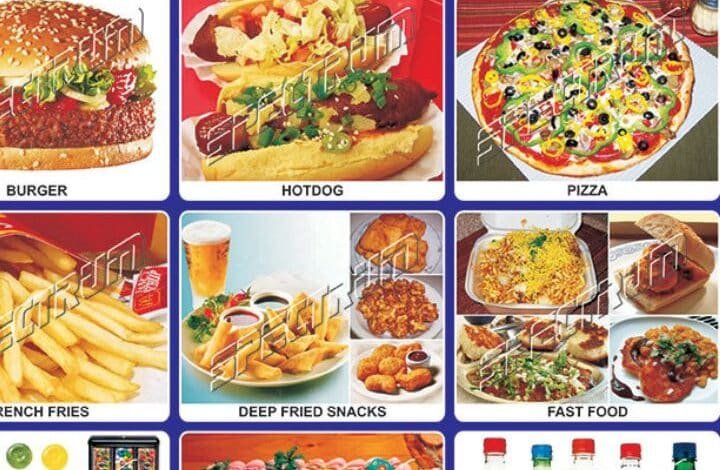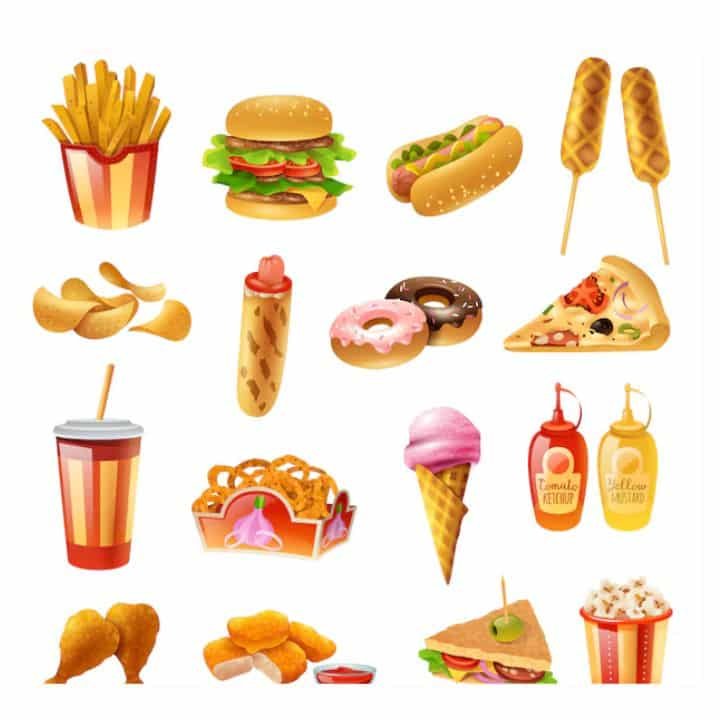Junk Food Chart | The Ultimate Understanding the Nutritional Value of Popular Junk Foods
junk food chart

In today’s fast-paced world, junk food has become a staple in many people’s diets. While these foods are convenient and often delicious, they can also be a major contributor to poor health if consumed excessively. In this article, we will explore a comprehensive junk food chart to help you understand the nutritional values of some of the most popular junk foods. Whether you’re looking to make healthier choices or just curious about the foods you eat, this guide will provide valuable insights into what’s lurking in your favorite snacks.
What is Junk Food?
Before diving into the junk food chart, let’s first define what junk food is. Junk food refers to foods that are high in calories but low in nutritional value. They typically contain high amounts of sugar, unhealthy fats, and salt. While these foods may provide a quick energy boost, they often lack essential vitamins, minerals, and fiber, which are crucial for overall health.
Popular junk foods include chips, sugary drinks, fried foods, and candy. These items may taste great, but they can contribute to weight gain, increased risk of heart disease, diabetes, and other health problems if consumed regularly.
Read more: Bengali Traditional Food
Junk Food Chart: A Quick Look at Popular Junk Foods
Here is a junk food chart that compares the nutritional content of some common junk foods. These figures are based on standard serving sizes and can vary depending on the brand or preparation method. However, this will give you a general idea of what you’re consuming when you indulge in these foods.
| Junk Food | Calories | Total Fat | Sodium | Sugars | Protein |
|---|---|---|---|---|---|
| Potato Chips (1 oz) | 152 | 10g | 170mg | 1g | 2g |
| Candy Bar (1 piece) | 250 | 14g | 100mg | 23g | 2g |
| Fried Chicken (1 piece) | 320 | 21g | 700mg | 0g | 23g |
| Soda (12 oz) | 150 | 0g | 45mg | 39g | 0g |
| Pizza Slice (1 slice) | 285 | 12g | 640mg | 3g | 12g |
| Ice Cream (1/2 cup) | 207 | 11g | 50mg | 20g | 3g |
| Donut (1 donut) | 200 | 12g | 120mg | 12g | 2g |
| French Fries (1 small) | 230 | 11g | 270mg | 0g | 3g |
As shown in the chart, junk foods are often high in calories, unhealthy fats, and sugar. For example, a typical candy bar contains over 250 calories, with 23 grams of sugar in just one serving. This is a significant amount of sugar considering the daily recommended intake for an average adult is about 25 grams for women and 36 grams for men.

The Hidden Dangers of Junk Food
While the junk food chart provides a snapshot of the calorie and nutrient content, it’s important to consider the long-term effects of consuming these foods.
- Obesity: Due to their high-calorie content and lack of essential nutrients, junk foods can contribute to unhealthy weight gain.
- Heart Disease: Many junk foods are high in unhealthy fats and sodium, which can increase your risk of developing high blood pressure and heart disease.
- Type 2 Diabetes: Foods high in sugar and refined carbohydrates can lead to insulin resistance, a major factor in the development of type 2 diabetes.
- Poor Digestion: Junk foods often lack fiber, which is essential for healthy digestion and bowel regularity.
How to Make Healthier Choices with Junk Food
Understanding the junk food chart and its nutritional values is the first step toward making healthier choices. While it’s okay to indulge in junk food occasionally, here are some tips to reduce its impact on your health:
- Portion Control:
The serving sizes in the junk food chart can be misleading. Eating a whole bag of chips or a large soda increases your calorie intake significantly. Stick to recommended portion sizes. - Choose Healthier Alternatives:
Opt for baked chips instead of fried ones, choose low-sugar snacks like fruit instead of candy bars, or try a healthier soda alternative like sparkling water with a splash of fruit juice. - Balance Your Diet:
If you’re craving junk food, balance it out with healthier meals. Include plenty of vegetables, whole grains, and lean proteins in your diet to ensure you’re getting the essential nutrients you need. - Drink Water:
Soda and sugary drinks are some of the worst offenders when it comes to junk food. Try to drink water or herbal tea instead to reduce your sugar intake.
Understanding Nutritional Labels and Making Informed Decisions
To make better choices, always check the nutritional labels on packaged foods. Look for key information like total calories, fat content, sodium levels, and sugar amounts. This will give you a clearer understanding of how a particular food fits into your overall diet.
Many brands are now offering healthier versions of classic junk foods. For example, you can find chips that are lower in fat, cookies with reduced sugar, or even fast food chains offering salads as alternatives.
Junk Food Chart: What to Watch Out For
When reviewing your junk food chart, here are a few things to keep in mind:
- Trans Fats: Trans fats are artificial fats found in many junk foods. Always look for products labeled “trans fat-free.”.
- High Sodium: Excessive sodium intake can lead to high blood pressure, so be mindful of the salt content in fast foods, snacks, and processed foods.
Conclusion
The junk food chart is a useful tool for understanding the nutritional value of the foods we eat. While it’s okay to indulge in junk food every once in a while, it’s essential to be mindful of portion sizes and frequency. By making informed decisions, reading labels, and opting for healthier alternatives when possible, you can enjoy your favorite snacks without compromising your health. If you’re looking for a healthier lifestyle, the key is moderation. Use the junk food chart as a guide to help you make better food choices, and remember that balance is essential in any diet. Healthy habits start with small changes, and every step counts toward achieving your wellness goals.




